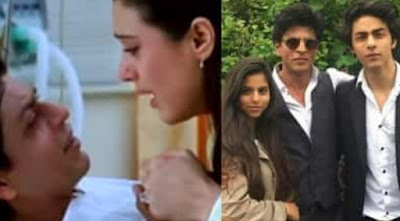Kal Ho Naa Ho is one of Shah Rukh Khan's most popular and memorable films. The 2003 film, which came out at the height of the actor's popularity, earned him both praise and awards for his portrayal of a terminally ill man with a golden heart.
One of the most talked-about scenes in the film is Shah Rukh's character Aman's death. However, Shah Rukh revealed in 2015, more than a decade after the film's release, that he never showed that scene to his children Aryan and Suhana. In fact, the film's producer, Karan Johar, created a special edit for Shah Rukh's children that omitted the death scene.
In September 2015, a Shah Rukh fan club tweeted a video of a young girl who appeared to be traumatised by the film's death scene. The account wrote, tagging the actor in the tweet,"Have You Seen This @iamsrk A Must Watch 'A Lil Girl's Reaction After Watching Kal Ho Na Ho."In his response, Shah Rukh revealed that Karan Johar had a special edit of the film made for his children."Never shown the ending of Kal Ho Naa Ho to my kids. Karan made a special edit where movie ends before I fly away," he tweeted.
When the film was released, Aryan was six years old and Suhana was three, and Shah Rukh apparently wanted to protect them from the scene and its depiction of death. AbRam, the actor's third child, was born in 2013. While Shah Rukh's reason for not showing them the scene was its nature, the film's director recently revealed that he despised the scene entirely.
Nikkhil Advani, the director of Kal Ho Naa Ho, told the Hindustan Times last year,"Shah Rukh absolutely hated the death scene of Kal Ho Naa Ho. He kept saying, ‘You’re too irreverent, not giving it any respect’," he said.
Nikkhil claimed that Shah Rukh was also filming Sanjay Leela Bhansali's Devdas at the same time, and that he kept comparing his death in the two films. He went on to say"He was also shooting Devdas at the same time in which he had a spectacular death scene. He kept saying, ‘Usse kehte hain death scene (Now that's a death scene). I explained to him that I was looking at death as a comma, not a full stop.”


